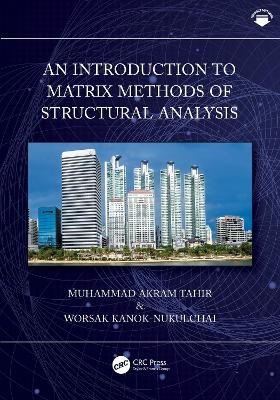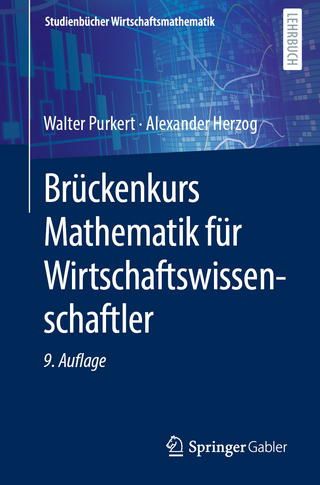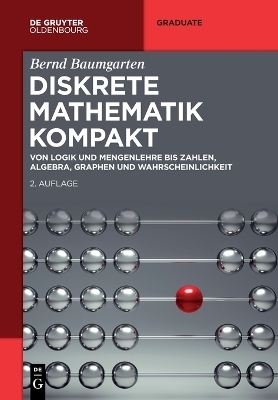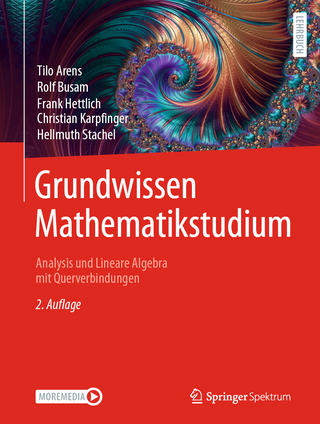
An Introduction to Matrix Methods of Structural Analysis
CRC Press (Verlag)
978-1-032-53202-8 (ISBN)
This textbook provides a comprehensive introduction to matrix methods of structural analysis, framed within a discrete modeling approach that is well-suited for digital computation. Two principal procedures—namely, the Matrix Force Method and the Matrix Displacement Method—are thoroughly illustrated for one-dimensional structural systems. Among them, the Matrix Displacement Method is more widely adopted, owing to its straightforward extension to two- and three-dimensional structures.
The book demonstrates how displacements, taken as the primary variables, enable the formation of local element stiffness matrices in the Direct Stiffness Method. In this latter approach, individual element contributions are assembled into a system-level representation, permitting the modeling of virtually any complex structure. This direct stiffness methodology underpins the development of today’s general-purpose finite element programs, offering both breadth and depth to structural analysis.
Features
Establishes discrete structural modeling as the basis of finite element methods, which are now the industry standard for structural analysis.
Provides a step-by-step explanation of the Force Method, the Displacement Method, and the Direct Stiffness Method for 1D members—such as beams, trusses, plane frames, grillages, and space frames—ensuring a clear and accessible learning experience.
Highlights Berkeley’s approach to representing joints by employing rigid nodes within a nodal network of interconnected 1D, 2D, or 3D deformable members.
Offers an illustrative extension through the MAIL (Matrix Analysis Interpretive Language), which enriches analysis examples, exercises, and problems.
Targeted at senior undergraduate and graduate students in structural engineering, this book serves as an essential prerequisite for the Finite Element Analysis of Structures.
Muhammad Akram Tahir obtained his B.Sc. in Civil Engineering from University of Engineering and Technology (UET) Lahore. He obtained his Master and Doctoral Degrees in Structural Engineering from Asian Institute of Technology. Dr. Tahir enjoyed the patronage of Prof. Pisidhi Karasudhi, Prof. Worsak Kanok Nukulchai, Prof. Tamon Ueda, Prof. Martin Wieland, Prof. Gupta and many others who are authorities in structural engineering. Worsak Kanok-Nukulchai holds a Ph.D. from the University of California at Berkeley in 1978 under Fulbright Scholarship. He joined the Bangkok-based Asian Institute of Technology (AIT) in 1979, retired as AIT President in 2018 and is currently AIT Emeritus Professor. He returned from his retirement in 2019 to serve as the Founding Executive Director of a specially established Chulalongkorn School of Integrated Innovation (ScII) with unique curriculum to groom talents for the changing world of digital era. Professor Worsak was inducted into the Royal Society of Thailand’s Academy of Science in 2016, the AIT Hall of Fame in 2019 and Chulalongkorn Engineers Hall of Fame in 2022.
1.Matrix Presentation of Structural Quantities 2. Mathematics and Principles of Structural Modeling 3. Matrix Force Method 4. Direct Force Method 5. Matrix Displacement Method 6. Matrix Stiffness Method 7. Temperature Effects in Matrix Methods
| Erscheinungsdatum | 03.12.2024 |
|---|---|
| Zusatzinfo | 17 Tables, black and white; 404 Line drawings, black and white; 404 Illustrations, black and white |
| Verlagsort | London |
| Sprache | englisch |
| Maße | 178 x 254 mm |
| Gewicht | 453 g |
| Themenwelt | Mathematik / Informatik ► Mathematik |
| Technik ► Bauwesen | |
| Technik ► Bergbau | |
| Technik ► Umwelttechnik / Biotechnologie | |
| ISBN-10 | 1-032-53202-5 / 1032532025 |
| ISBN-13 | 978-1-032-53202-8 / 9781032532028 |
| Zustand | Neuware |
| Informationen gemäß Produktsicherheitsverordnung (GPSR) | |
| Haben Sie eine Frage zum Produkt? |
aus dem Bereich


